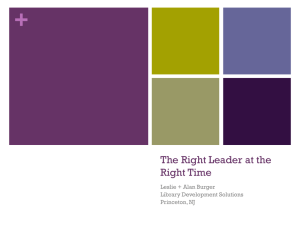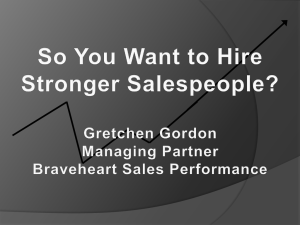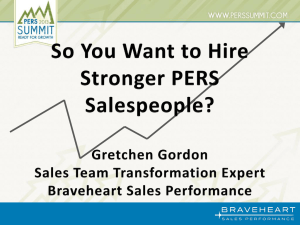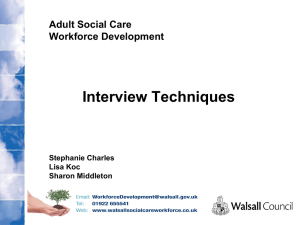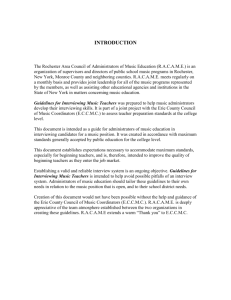How Did I Get Here? * The Role of Unconscious Bias in Career Paths
advertisement
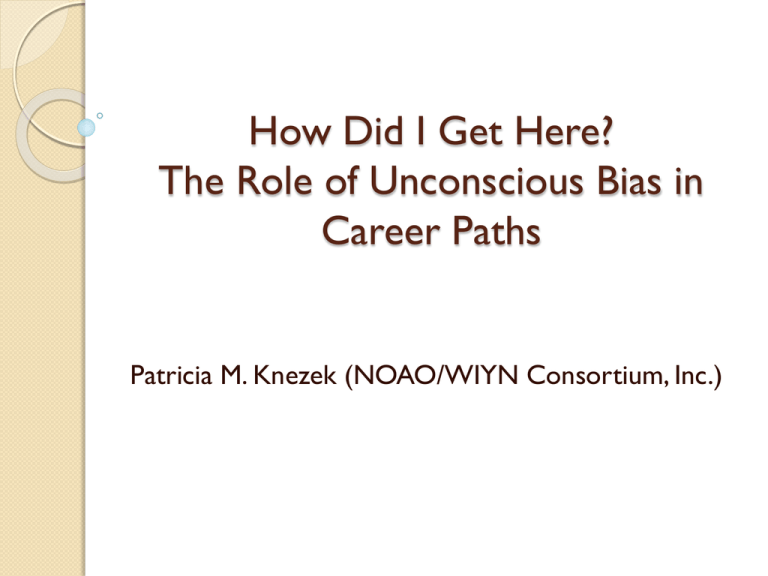
How Did I Get Here? The Role of Unconscious Bias in Career Paths Patricia M. Knezek (NOAO/WIYN Consortium, Inc.) Brief Overview I. II. III. The Interview Process – for the Committee The Interview Process – for the Candidate Looking Beyond Hiring – Bias Every Day Used http://sitemaker.umich.edu/advance/toolkits for reference Unconscious Bias Affects: The way people interact with you The way you interact with others It’s critical to consider both as you move along your career path! Maintain “Constant Vigilance” The Interview Process – Preparation Look over the interview candidate list – is there diversity? If not, re-evaluate. Review EEO laws with the committee. Review what questions can and cannot be asked legally. Remind everyone that the goal is to get the best candidates possible – and that means drawing from a broad group, not just people who “look and talk like you.” Interview Process – Actual Interviews Have a formal set of interview questions that are asked of every candidate, and assign specific questions to specific members of the committee Organize the entire interview process so that it is as uniform as possible. Have a evaluation form that all committee members have reviewed and approved and use it. Meet as a committee after each candidate interview to discuss and take notes. Interview Process – Evaluation and Recommendation Do not allow committee members to evaluate candidates that they did not interact with. Maintain “constant vigilance” for evidence of bias in evaluation, including: ◦ Descriptive language ◦ Appearance ◦ “Not like us” (including accents, etc.) Interview Process – Candidate Viewpoint Do your homework ◦ Read about the place and people ◦ Prepare to discuss how you will “fit in” ◦ Prepare list of questions Dress professionally Behave professionally Think about both the unconscious biases you might have going in, and that they might have Example Candidate was well qualified Candidate was known to most committee members During the face-to-face interview with the committee, interaction between candidate and male committee members was very casual ◦ Male committee members were very enthusiastic ◦ Female committee members had serious concerns about professional demeanor in public Looking Beyond Hiring – Bias Every Day We face unconscious bias every day We must be proactive to combat this bias, both within ourselves and others You can help control your destiny! Example Thought I was an administrative assistant because: ◦ I was the only woman present ◦ I was diligently taking notes ◦ I sat in the middle of a large, rectangular table I am still often the only woman present, and I take diligent notes, BUT ◦ I will introduce myself and my role, and lead the meeting (if appropriate) ◦ I will sit at the head of the table (if appropriate) Example Female support personnel not a Ph.D. ◦ A female scientist is on the mountain to do an instrument startup for a new observer. ◦ New (young) male observer asks female scientist where she went to school, and if she had a Ph.D. Support personnel is female ◦ Upon arrival, introduces herself as Dr. Jane Smith. ◦ Indicate that she is the instrument scientist. ◦ Take control of the situation. Example Young man is assumed to be in junior position ◦ He is named Project Scientist for a major instrument, his first such position. ◦ The Project Manager is a much more senior man. ◦ The team always goes to PM for decisions. Young man is Project Scientist ◦ Be proactive when decisions are science-based. ◦ Do your homework and make informed decisions. So, Does This Honestly Matter? See the next talk!




